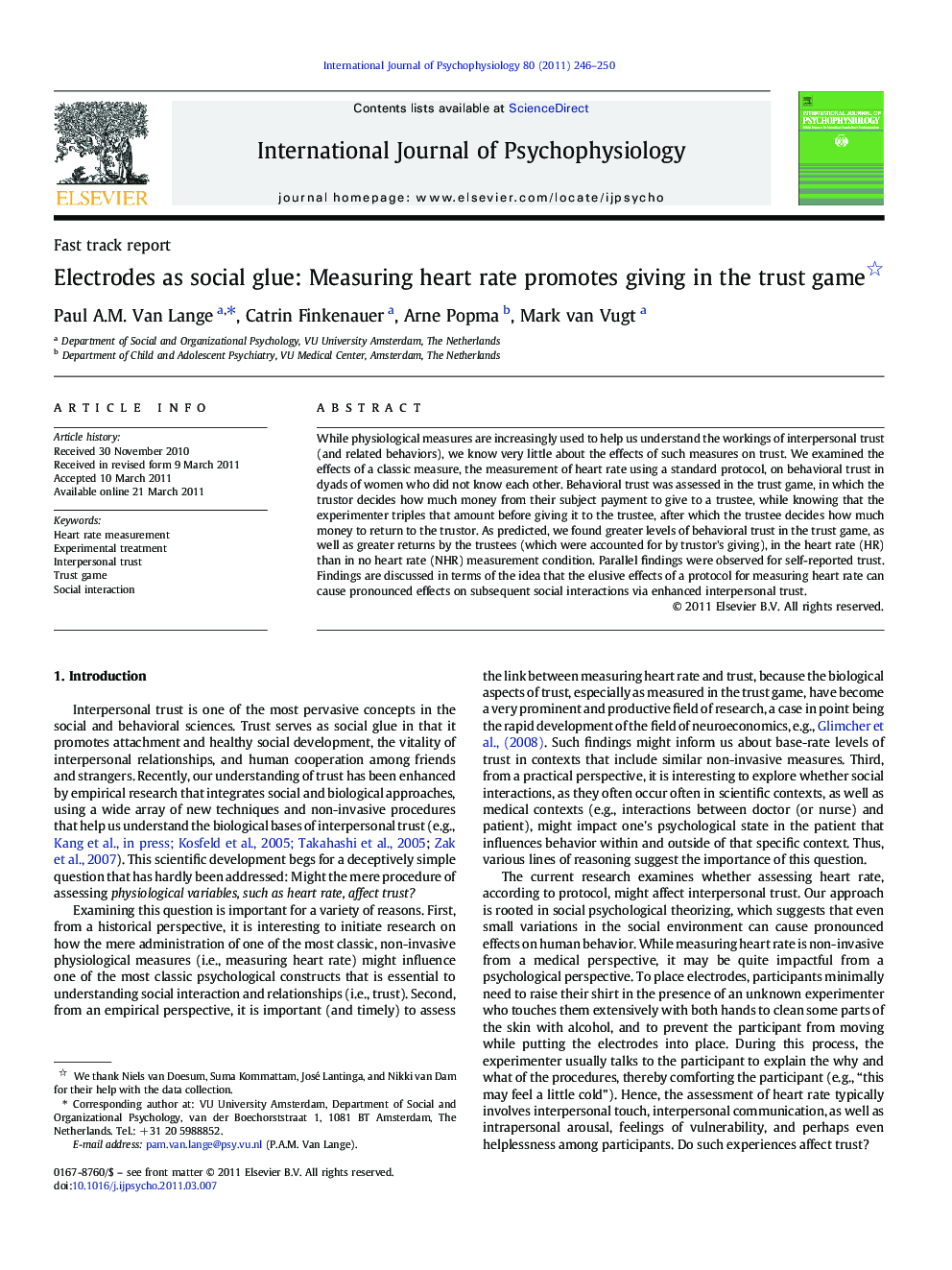| کد مقاله | کد نشریه | سال انتشار | مقاله انگلیسی | نسخه تمام متن |
|---|---|---|---|---|
| 931417 | 1474454 | 2011 | 5 صفحه PDF | دانلود رایگان |

While physiological measures are increasingly used to help us understand the workings of interpersonal trust (and related behaviors), we know very little about the effects of such measures on trust. We examined the effects of a classic measure, the measurement of heart rate using a standard protocol, on behavioral trust in dyads of women who did not know each other. Behavioral trust was assessed in the trust game, in which the trustor decides how much money from their subject payment to give to a trustee, while knowing that the experimenter triples that amount before giving it to the trustee, after which the trustee decides how much money to return to the trustor. As predicted, we found greater levels of behavioral trust in the trust game, as well as greater returns by the trustees (which were accounted for by trustor's giving), in the heart rate (HR) than in no heart rate (NHR) measurement condition. Parallel findings were observed for self-reported trust. Findings are discussed in terms of the idea that the elusive effects of a protocol for measuring heart rate can cause pronounced effects on subsequent social interactions via enhanced interpersonal trust.
Research highlights
► This research integrates psychophysiology and behavioral sciences (social interaction).
► A protocol for measuring heart rate promotes trust.
► 73% (vs. 20%) of the trustors gave all the money to the trustees in the HR (vs. NHR) condition.
► A protocol also promotes self-reported trust, as well as self-reported arousal.
► Findings contribute to past research on the white coat effect.
Journal: International Journal of Psychophysiology - Volume 80, Issue 3, June 2011, Pages 246–250